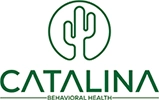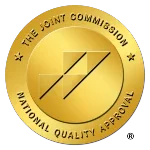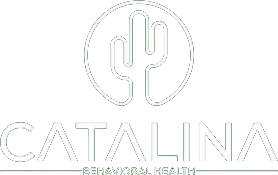An Alcohol Taper Schedule and Guidance on Weaning Off Alcohol
Many people wish that they could stop drinking heavily because they understand the impact it has on their work, personal life, and relationships. However, they might not be ready to enroll in medical detox. If you decide to try to go it alone, you should know how to taper off alcohol with a proven schedule.
Tapering off alcohol allows you to minimize withdrawal symptoms, manage cravings for more alcohol, and focus on improving your mental health. You cut out one drink at a time on each subsequent day using a direct taper. Another option is a substitution taper, where you substitute liquor for less potent drinks like beer or wine until you can scale back entirely.
Catalina Behavioral Health offers help for anyone who is thinking about quitting alcohol for good. We can make you more comfortable with around-the-clock care as you go through alcohol withdrawal in a supervised setting. Keep reading to learn more about how tapering can help you.
Get Effective Detox and Rehab Options at Catalina
Why Tapering Alcohol Consumption Can Minimize Withdrawal Symptoms
There are lots of well-meaning sources out there that recommend that you go through withdrawal from alcohol by simply cutting out your drinking. The problem is that this often results in extreme withdrawal symptoms and necessitates a medical detox where you can be under supervision for dangerous effects.
Instead, tapering off alcohol allows you to detox from drinking slowly. Many people try this method at home before they seek help from a medical professional.
The goal is to reduce the number of drinks you have daily slowly. This allows your body to adjust to a life without alcohol and can minimize the mental stress of quitting alcohol cold turkey. However, sticking with a tapering schedule can be very difficult and requires a lot of self-discipline.
But there are plenty of benefits if you commit to tapering.
Benefits of a Tapering Schedule for Alcohol Abuse

When a medical professional recommends that you enter into an alcohol detox, you might wonder why you should go through the longer path of tapering when you could quit alcohol cold turkey. Here are a few benefits of tapering.
Minimize Alcohol Withdrawal Symptoms Slowly
Chances are that if you’re thinking about quitting substance use, it’s because you have spent a long time dedicated to your addiction. Long-term use of any substance often produces some side effects, including physical dependence on the drug of choice.
That means that when you go to quit, you’ll face some serious alcohol withdrawal symptoms.
Both body and mind rely on alcohol intake to function normally in alcohol use disorder. Some of the most severe withdrawal symptoms include delirium tremens and even seizures. These are less likely during tapering, but you may still have mild alcohol withdrawal symptoms.
Alcohol acts on the body in a serious way, serving as a central nervous system depressant. In some cases, your nervous system may instead produce more of a neurotransmitter known as glutamate when you quit drinking. As glutamate soars in the body, you’ll see more alcohol withdrawal symptoms.
Manage Cravings Without Medical Supervision
One of the most challenging aspects of managing intense symptoms is that you’ll do anything to get rid of them. Your body is primed to want a drink to function normally, both mentally and physically. When you taper off alcohol, you give your body a chance to fulfill that need in a more controlled way.
You can give in to cravings at specific points throughout the day as long as you stick with your reduced intake.
While counseling and help from a medical professional can certainly help you manage your alcohol cravings when you reach the point of cutting alcohol out altogether, this is a great first step.
Focus on Mental Health While You Quit Drinking
Underneath the issue of alcohol use disorder is often a mental health disorder. The Substance Abuse and Mental Health Services Administration (SAMHSA) found that one in four adults who have a mental illness will also struggle with substance abuse. This mental health issue can be exacerbated in detox.
Tapering off alcohol slowly allows you to think about what you need mentally to thrive. Instead of both severe withdrawal symptoms and psychological dependence, you can take some of the stress off. This enables you to get to the bottom of mental health issues as you stop drinking.
It may be that you need to see a therapist or a psychiatrist if you’ve been self-medicating with alcohol for a long time. Non-addictive prescription medication may be able to help you manage anxiety, mood disorders, and other common ailments that would traditionally prompt you to have a drink.
Methods of Quitting with a Tapering Schedule

When you know that quitting cold turkey isn’t the right move for you, you should investigate the options that can keep you from experiencing withdrawal symptoms. A tapering schedule isn’t a one-size-fits-all approach, so you may want to weigh the benefits of these different plans.
Direct Taper: Stop Drinking One Drink at a Time
The direct taper is the first and most obvious method to stop drinking heavily. Suppose that you usually have five to seven drinks per day at the height of your alcohol addiction. The goal of direct tapering off is to reduce your daily drinks, one drink at a time. This sounds simple, but it might take longer in reality.
Some people cut out one drink per day, with gains made each following day. This can be a sudden taper that leaves you without a drink in the first two weeks of quitting alcohol use.
It may be best to cut a single drink every few days to give your body and mind more time to adjust to the decrease in intake without triggering withdrawal symptoms from alcohol.
The important thing about direct tapering is that you actually measure your alcohol use. You will need to know how many drinks you have daily, down to the measure. This is the only way you can scale back if you know your starting point.
Substitution Taper: A More Complex Option to Stop Drinking
A substitution taper is a bit more complex and will require a habit change to quit alcohol use this way effectively. If you want to know the important takeaways, alcohol detoxification starts by reducing alcohol intake through the substitution of less potent options.
What does this look like in practice?
Many people struggle with alcohol use, turning to hard liquor to achieve the intoxication that allows them to feel better. You might substitute those spirits with beer or wine in a substitution taper. You’ll have less alcohol in your system if you have the same number of drinks. Once you get further into a taper, you may switch to non-alcoholic drinks to soothe the need for routine.
The problem here is that you must have precise self-discipline. You’ll be tempted to drink more of the beverages with lower alcohol content, but this taper only works if you slow down consumption.
As your body gets used to less alcohol, you can start to directly taper the beer and wine until you stop drinking altogether.
Establishing an Alcohol Tapering Schedule with a Medical Professional

Are you convinced that a tapering schedule is the right fit for you? If you’re consuming a lot of alcohol, health might be a concern as you move into withdrawal. This is why it’s important to work with doctors or other medical professionals with experience in addiction medicine. They can help you manage your drinking and taper effectively.
Before you head to your first appointment, there are a few things you can do to prepare. First, you will need to track how much you are actually drinking. This is sobering, as people will often drink more than they realize. Record every drink in a small notebook.
You’ll also want to measure spirits intake to see how many average drinks you take.
Once you have a baseline of how much you are drinking, a doctor can help you determine a start and end point. They can determine a reasonable path forward just for you to quit drinking without needing medical supervision from a detox center.
How Long Does Tapering Off Alcohol Take?
By this time, you may be committed to the idea of tapering because of the potential side effects if you suddenly quit drinking. You can do this without entering into ICU and ER settings, but it will require a lot of self-discipline to stick with it.
According to the National Institute on Alcohol Abuse and Alcoholism, heavy drinking is defined as four to five drinks per day or binge drinking more than five days per month. However, many people go above and beyond this because they have a heavy pour that isn’t measured by medical standards.
In a direct taper, you may cut out one drink every day until you get sober entirely. For example, you may start with five drinks on the first day, four on the second day, and so on.
If you’re going with a substitution taper, you may substitute one drink each day for another each day. As you replace all of your heavy drinks with less potent options, you’ll slowly start to cut them out the same way you did with a direct taper. Cut one drink each day until you reach zero drinks per day.
Get Accredited Treatment Programs at Catalina
When to Seek Help from an Alcohol Rehab
Of course, there are times when you may require an alcohol detox to manage withdrawal symptoms in a more intense way. Tapering can prove more difficult than it sounds, as you have no incentive to stop you from pouring another drink when you experience a craving.
It’s best to enroll in an experienced detox and alcohol rehab program in situations like this.
Rehab is the best option for anyone who has serious cravings that they can’t curb with coping skills or if they have extreme withdrawal symptoms like hallucinations or seizures. These are more likely if you’ve been abusing alcohol for a long time at higher volumes.
Medical detoxes like those offered by Catalina Behavioral Health through partner facilities locally, allows you to rest assured that you’re in good hands. You won’t have the opportunity to turn to alcohol while in our facility, and we can alleviate some of your more severe withdrawal symptoms. Here’s what you should know about detox.
Medication-Assisted Treatment in Addiction Medicine

When you go through alcohol withdrawal, you may find it helpful to enlist the help of a doctor who can offer medication-assisted treatment, which is true as well at our on-site sub-acute detox setting. This allows us to prescribe medications that make you comfortable as your body adjusts to life without alcohol.
For example, we may be able to prescribe something for nausea and vomiting, insomnia, and anxiety.
This prescription medication may not be a long-term solution for your substance use, but it can be very valuable to you in the early days of alcohol withdrawal. There are some serious benefits to MAT in the long run. According to research, MAT reduced hospitalization for mental health issues and ER visits.
Transition to Long-Term Programs After Alcohol Detox
The struggle to maintain your gains after tapering off alcohol is real. Just because you made it two or three weeks into a tapering schedule doesn’t mean you’re in the clear for long-term sobriety. Here at Catalina Behavioral Health, we offer an entire continuum of care to help you heal from alcohol use.
After detox, you can move into our residential treatment program, where you will stay for thirty to ninety days. We’ll treat you with individual therapy, group therapy, family therapy, yoga, music, and art to help equip you with new coping skills that don’t revolve around substance misuse.
You can even transition to our intensive outpatient programs, where you will have support during the day and freedom at night to practice your new skills. This is often a great choice for anyone who has been through medical detox and inpatient treatment already. It also enables you to return to some of your outside responsibilities with family and work.
If you’re thinking about quitting alcohol, Catalina Behavioral Health has a program made for you.
Personalized Treatment Plans for Alcohol Withdrawal

One of the most important aspects of your recovery is that it must be personal. Catalina Behavioral Health believes that a cookie-cutter approach won’t work for everyone, so we offer comprehensive assessments and evaluations that get to the bottom of your substance misuse.
We can come up with a treatment plan that is tailored to your needs, underlying mental health issues, and your current stage of recovery. Our clinicians use a varied approach to treatment for substance use disorder, employing the best of cognitive and dialectical behavioral therapy. Motivational interviewing and Twelve Step groups, SMART Recovery, or other forms of peer support meetings can also help.
Our residential treatment program allows us to monitor your progress better and adjust accordingly as you learn and grow in your recovery. You get around-the-clock care from a team of nurses, doctors, and trained counselors who can help you move through withdrawal with greater ease.
Up To 100% of Rehab Costs Covered By Insurance
Get Help for Alcohol Withdrawal at Catalina Behavioral Health
When you’re ready to get alcohol consumption under control once and for all, Catalina Behavioral Health is ready and waiting to help you enroll in our program. We offer everything from detox for more intense withdrawal symptoms to residential and intensive outpatient for long-term treatment options.
Our enrollment team can answer any of your questions about tapering and detox, verify your insurance benefits, and walk you through the process of enrolling in our program. All it takes is a quick call that has no obligation for you to enroll with us. Everything we discuss is confidential.
Reach out to us today to learn more about how we can help you with alcohol abuse issues for good!
References
- Canver BR, Newman RK, Gomez AE. Alcohol Withdrawal Syndrome. [Updated 2024 Feb 14]. In: StatPearls [Internet]. Treasure Island (FL): StatPearls Publishing; 2025 Jan-. Available from:
- Prior, P. L., & Galduróz, J. C. (2011). Glutamatergic hyperfunctioning during alcohol withdrawal syndrome: therapeutic perspective with zinc and magnesium. Medical hypotheses, 77(3), 368–370.
- Mental health and substance use co-occurring disorders. SAMHSA. (n.d.-b).
- U.S. Department of Health and Human Services. (n.d.-c). Understanding alcohol drinking patterns. National Institute on Alcohol Abuse and Alcoholism.
- Robertson, A. G., Easter, M. M., Lin, H., Frisman, L. K., Swanson, J. W., & Swartz, M. S. (2018). Medication-Assisted Treatment for Alcohol-Dependent Adults With Serious Mental Illness and Criminal Justice Involvement: Effects on Treatment Utilization and Outcomes. The American journal of psychiatry, 175(7), 665–673.





